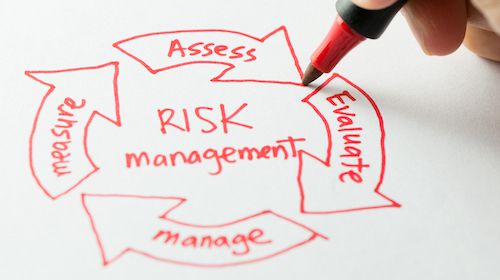What is Risk Management?
Authored by:
iClick2Learn Team
Translate Text
Video Transcript
A risk is any threat, hazard or uncertainty that can have an impact on your service. We know about the obvious ones like fire and injuries, but we often don’t think about things like financial loss, data loss or damage to our reputation. If you fail to plan for when things go wrong, you might have to deal with negative impacts such as; financial losses, personal injury, damage to your services reputation or accreditation, criminal charges and environmental damage. So where do you start? You can start with three simple questions. What could go wrong? What will we do if the risk happens? And what can we do to prevent it? You also need to make sure that you consider these questions in a range of risk categories such as; strategic, financial, human or environmental.
Risk management, is a mindset which involves four ways of thinking. One, thinking ahead and anticipating risks as well as preparing for them. Two, thinking creatively, searching for new and better ways to mitigate and manage risk. Three, thinking responsibly and accepting that risks need to be dealt with. And four, thinking realistically. You have to balance the costs and benefits of managing risk. Risk identification, assessment and management is a process and there are some clear steps to help you consider the risks.
Step one is about identifying what project activity or day to day operation you’re focusing on. In step two you’ll brainstorm risks. Think through what happens in the environment or when doing the task. Step three is about using the matrix provided to assess how serious the risk is. Consider the financial, reputational and human risks when setting the impact. If it’s a low impact, what does this mean? For example, is it a financial loss of $200 or $2,000? It’s important to be clear on the impact to best determine how serious the risk is. In step four, you should brainstorm what you can do to either mitigate that means reduce the likelihood of the risk or manage the risk if it happens. Step five is for your committee to determine how they expect your service manager to monitor and review the risks.
A good tip for your secretary is to add a standard agenda item called risk to make sure you’re receiving these reports from your service manager. Be sure to also involve a selection of relevant stakeholders in regular reviews. Consult with them and include them in problem solving when managing risk.
Related posts
Accidental Counsellor
Develop Your Event Plan
Risk Management
Approving Your Budget
5 Tips for effective meetings
Event Risk Management for Charities and Not-For-Profits
Covid-19 Event Risk Management for Charities: A Checklist
Governance Risks for Community and Grassroots Organisations
Ten Golden Rules of Risk Management
What is Risk Management?
Risk Management Plans
Risk Management Plans for Services
4 Ways to Think About Risk Management
How to Start a Risk Management Plan
What is Risk Management
Why Risk Training is a Great Thing for Volunteers to Have
- Tags | Risk
















